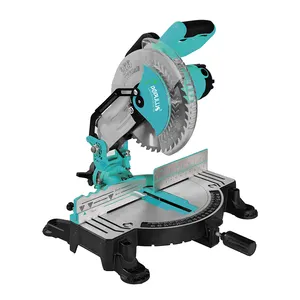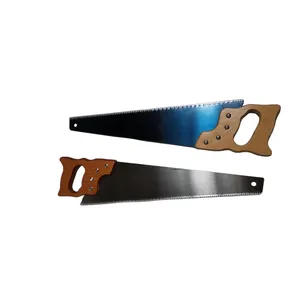Introduction
Woodworking, an age-old craft, has evolved over centuries, with tools and techniques becoming more sophisticated. This article delves into the world of woodworking, emphasizing the importance and versatility of hand wood cutting tools. We explore different types of hand tools, their unique applications, and the top hand wood cutting tools of 2023. We also guide you on choosing the right tool for your needs, maintaining your tools for longevity, and ensuring safety while using them. Whether you're a seasoned professional or a DIY enthusiast, this comprehensive guide will help you master the art of woodworking.
Understanding Woodworking: A Brief Overview
Woodworking is the process of creating decorative and functional items from wood, such as cabinets, tables, instruments, and more. It involves techniques like wood carving, joinery, and woodturning. Woodworking has a rich history, with wood being one of the first materials used by early humans for tools and utensils. As civilization has advanced, so has woodworking, with modern technology enabling the creation of more advanced projects. Whether you're a hobbyist or a professional, mastering woodworking requires understanding different types of woods, appropriate techniques for working with them, and the tools needed for the job.
The Importance of Hand Wood Cutting Tools
Hand tools, including wood cutting tools, are essential for any DIY project or repair work. They are cost-effective, easy to use, and require very little maintenance. Hand tools do not rely on electricity or batteries, which makes them reliable when power is unavailable. Using hand tools provides a sense of satisfaction and pride, making them a valuable addition to any toolbox. The importance of hand tools cannot be overstated. They offer several benefits over power tools, such as portability, versatility, and affordability.
Types of Hand Wood Cutting Tools
Hand wood cutting tools are essential for woodworking, offering precision and control. Hand saws, for instance, are versatile and portable, ideal for various DIY projects. They rely on human strength and technique, making them cost-effective. Chisels, another type of hand tool, allow for precise cuts and are used for carving or cutting heavier materials. Japanese saws, or nokogiri, are unique as they cut on the pull stroke, offering less labor-intensive operation and precise cuts. Each tool has its unique advantages and applications, making them indispensable in woodworking.
Hand Saws
Hand saws are indispensable tools in woodworking, divided into three categories: Panel Saws, Back Saws, and Frame Saws. Panel Saws are used for quickly rough-cutting boards, while Back Saws provide precision cuts for wood joints. Frame Saws, on the other hand, are versatile, capable of cutting curves and rough-cutting boards and logs. The teeth configuration, either 'Rip' or 'Cross Cut', and the tooth count significantly affect the saw's performance. It's crucial to understand these characteristics to choose the right hand saw for your woodworking needs.
Chisels
Chisels are hand-held tools with a distinctive cutting edge, designed for carving and cutting hard materials like wood. They come in various materials such as chrome, vanadium, and steel. Smaller chisels are perfect for intricate woodworking, while larger ones are used for removing large sections of wood. Woodworking chisels are available in multiple subtypes, each suited for specific tasks. Smaller chisels are ideal for crafting intricate wood detailing, whereas larger tools are preferred for removing sizeable areas of wood. It's important to choose the right type for your requirements.
Planes
Planes are sophisticated woodworking tools, designed to control the size and quality of the shaving. They perform four basic tasks: sizing and preparing stock, cutting joinery, smoothing surfaces, and shaping curves and decoration. Bench planes, the most common type, are used for sizing, smoothing, and rough-surfacing parts. Joinery planes are used for cutting grooves and fitting tenons. Smoothing planes are used to achieve perfect smoothness on a surface. Lastly, there are planes for cutting decoration and shaping, which include spokeshaves for shaping and molding planes for decorative details.
Carving Tools
Wood carving is a versatile art form that can be done with a variety of tools. These include carving sets, chisels, gouges, knives, and even specialized tools like Japanese carving tools, Macaroni & Fluteroni tools, Veiners, and V-Tools. Each tool has its unique application, from simple whittling to intricate relief carving. Whether you're a hobbyist or a professional, choosing the right carving tool can make all the difference in your woodworking project.
Top Hand Wood Cutting Tools of 2023
In 2023, top hand wood cutting tools include the High Precision Folding Hand Saw, known for its durability and precision. The Double-Edged Japanese Pull Saw, with its unique design, is perfect for various cutting applications. The Fast-Cutting Hand Saw cuts through wood 50% faster than comparable saws. The Heavy-Duty Folding Hand Saw is ideal for heavy-duty tasks, while the Compact Folding Hand Saw is compact yet powerful. The Universal Cutting Precision Back Tenon Saw offers universal cutting precision, and the Electric Hand Saw cuts through thick wood with ease.
Choosing the Right Tool: Factors to Consider
When choosing the right hand wood cutting tool, start by listing the features you need and want. Rate these features on a scale of 1 to 10 based on their importance to you. Then, research all the tools you're considering and rate them against your list. Reject any tool that doesn't meet your must-have requirements. This process may take a few iterations, but it will help you make an informed decision. Consider factors like your familiarity with the tool, its reliability, maintenance requirements, cost, and even the space it will occupy in your workshop.
Maintaining Your Wood Cutting Tools
Proper maintenance of your wood cutting tools is crucial for their longevity and performance. This involves correct storage to prevent damage and rust, regular cleaning according to the manufacturer's instructions, and keeping them sharp. Use a sharpening stone for particularly dull tools, and a strop for regular sharpening. A honing guide can help set the accurate angle of the blade when sharpening chisels.
Safety Measures When Using Wood Cutting Tools
Woodworking can be dangerous if not done with caution. Always wear safety equipment to protect your hearing, eyes, and skin. Avoid loose clothing and distractions while working. Keep your tools contained and disconnect power when not in use. Use sharp blades and bits for precise cuts. Always check for nails, screws, or other metal before cutting. Even with safety measures, accidents may happen, so having appropriate business insurance is crucial.
Conclusion
Mastering the art of woodworking is a journey that involves understanding the nature of wood, the tools needed, and the techniques to use. Hand wood cutting tools, with their versatility and precision, are an indispensable part of this journey. From hand saws to chisels, planes, and carving tools, each has its unique role and application. The top tools of 2023, such as the High Precision Folding Hand Saw and the Double-Edged Japanese Pull Saw, offer high precision and durability. Choosing the right tool involves careful consideration of your needs and the tool's features. Proper maintenance and safety measures ensure longevity and safe operation. With the right tools, knowledge, and safety practices, you can truly master the art of woodworking.












































 浙公网安备 33010002000092号
浙公网安备 33010002000092号 浙B2-20120091-4
浙B2-20120091-4